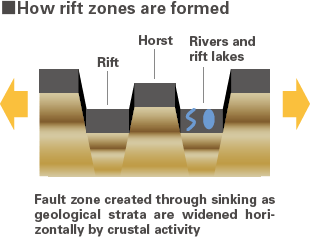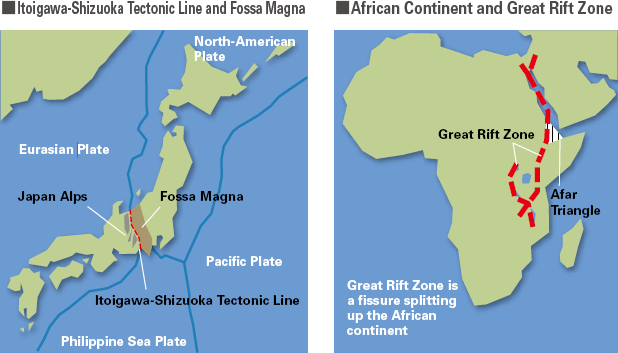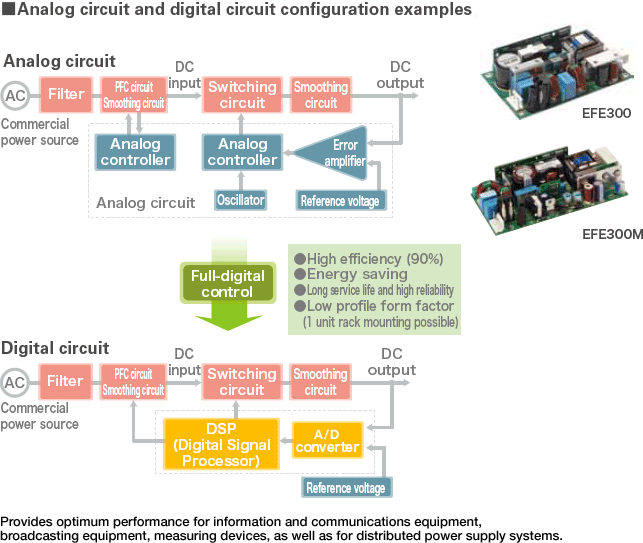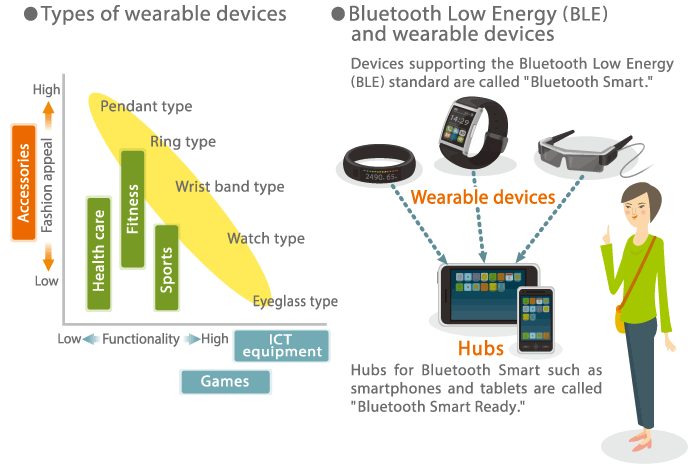Wonder Of Nature
vol.1 A New Cornerstone of Power Electronics

The 1st edition
EFE Series of Embedded Switching Power Supplies With Digital Control
The unstoppable trend towards digital also extends to switching power supplies. The EFE series of embedded switching power supplies (TDK-Lambda brand) represents a new standard featuring latest technology. Full-digital control of all operation aspects enables highly precise power management, resulting in 90 percent efficiency, combined with compact dimensionsand low profile that allows 1 unit rack mounting.
Major Fault Dividing East and West Japan and the Fossa Magna
While the Japanese archipelago is usually said to be crescent shaped, a sharp bend can be observed in the center of Honshu.This rift zone is called the "Fossa Magna" (Latin for "large trench"). A rift zone is a formation where horizontal forces on the Earth's crust have resulted in a depression, often forming basins and lakes. The Matsumoto basin, Suwa basin, and Lake Suwa in Nagano Prefecture are typical basin and rift lake formations in the Fossa Magna zone.
On a much larger scale than the Fossa Magna, there is the Great Rift Zone on the African continent. Looking at a map, one sees a deep rift-like valley zone extending from Ethiopia towards Uganda and Tanzania in a North-South direction. The cause for this rift lies in the fact that the plate on which the African continent is located is in the process of splitting, due to mantle activity in the Earth's interior. Lake Turkana, Lake Tanganyika and other lakes in the region were formed as rift lakes in this rift valley. Due to lively mantle activity, there are many volcanoes in the area, the most famous being Africa's highest peak, Mt. Kilimanjaro (5,895 meters) with its perennial snow cap.
The Arabian peninsula formerly was part of the African continent. This is evident from the facing coast lines of the Red Sea, whose matching shapes resemble the pieces of a jigsaw puzzle. However, the part which would be the heel of the bootshaped Arabian peninsula does not quite seem to fit into this picture. Its counterpart on the African side is a lowland area called the Afar Triangle. This area played an important role in establishing the veracity of the plate tectonics theory. When one considers the Afar Triangle as a sea, it exactly matches the coast line of the Red Sea dividing the African continent from the Arabian peninsula. The Afar Triangle is actually a lowland slowly sinking into the sea. Just as the Red Sea was formed by a continental split, it is expected that Africa will split in the East-West direction in several hundred thousand to about a million years, causing the ocean to enter the lowland area. Ever since the birth of our planet, such continental movement has been going on, in a continuous succession of meetings and partings.


Commercial AC 50 Hz and 60 Hz Regions and Frequency Converter Locations
The line frequency of commercial AC power in Japan is 50 Hz in Eastern Japan and 60 Hz in Western Japan. The dividing line between the two frequency regions again closely coincides with the Itoigawa-Shizuoka tectonic line. The reason for the discrepancy in frequencies lies in the fact that German-made generators were used in the Eastern region of the country during the Meiji Period, while American-made generators were used in Western region, and the power grid then was expanded gradually from these two points of origin. The Tokaido Shinkansen train (Bullet train) which links Eastern and Western Japan is driven by AC motors. Because a change in line frequency along the way would prevent the train from operating properly, frequency converters were built in Tokyo, and these are used to supply 60 Hz current to the tracks eastward of Fujikawa.
Frequency conversion is also important if natural disasters or accidents require compensation for power losses across the East / West frequency divide. A frequency converter station uses a step-down transformer to reduce the voltage and then converts the alternating current into direct current. After conversion into either 50 or 60 Hz alternating current, the voltage is then again boosted for distribution by a step-up transformer. Put simply, a frequency converter station comprises an AC to DC converterand an inverter that turns DC into AC. To handle the high voltages and high power required for the commercial AC grid, a special device called a thyristor valve is used. A thyristor (SCR) is a semiconductor with a pnpn structure and three terminals. Trigger current supplied to the gate is used for on/ off switching of a larger current flowing in the forward direction from the anode to the cathode. The thyristor therefore functions as a rectifier with added switching capability. Instead of conventional thyristors, frequency converter stations increasingly use a device called an optical trigger thyristor that performs switching by means of an optical signal. This provides insulation between the control circuit and electrical circuit, thereby helping to eliminate noise. Frequency converter stations employ latest powerelectronics technology. However, currently there are only three such stations (Sakuma, Shin-Shinano, Higashi-Shimizu) in Japan, with a combined conversion capacity of about 1 million kW. This is not enough to accommodate power needs on the order of 10 million kW.



Full-Digital Control Realizes 90 Percent Efficiency
Because electronic circuits are driven by DC current, electronic equipment running on commercial AC power requires a power supply that converts AC into DC. This conversion process always involves a certain power loss. The dominant type of power supply used these days is the switching power supply because it offers high efficiency and allows compact dimensions. The alternating current is first rectified using diodes, a switching element then creates a high-frequency pulse current and finally the voltage is converted using a transformer. Because the transformer does not need to be large, this type of power supply is much smaller and lighter than conventional power supplies of the series type or linear type.
As in many other sectors of the electronics industry, the world of switching power supplies also is undergoing a transformation towards fully digital solutions. Digitization in switching power supplies previously was mostly limited to the implementation of communication functions with external circuits. Recently however, fully digital solutions where the analog control circuit is replaced by an A/D converter and digital signal processor (DSP) are gaining ground.
Ever since TDK-Lambda opened up the field with a full-digital control A/D converter in 2005, the company has been expanding its range of power supplies that make full use of the advantages of digital control. The latest EFE series of embedded front-end AC-DC switching power supplies offers breakthrough efficiency that simply was not possible with analog control. In addition, the products feature even more compact dimensions, a low profile form factor, and advanced functionality. Full-digital circuitry enables output control to achieve an outstanding 90% efficiency rating, while the slim profile allows 1 unit rack mounting.
EFE Series of Embedded Switching Power Supplies
Latest series of AC-DC switching power supplies impressively demonstrates TDKLambda's accumulated technological know-how. Break-through 90 percent efficiency rating is achieved thanks to advanced digital control circuitry combined with a highefficiency transformer with low power loss, and careful optimization of all parts. Compact dimensions and low profile form factor enable use in 1 unit rack equipment. This new generation of switching power supplies is eminently suitable for information and communications equipment, broadcasting equipment, measuring devices, and similar applications. It also allows precise power management in distributed power supply systems. The lineup also includes the EFE300M specially designed for medical devices.

TDK is a comprehensive electronic components manufacturer leading the world in magnetic technology





